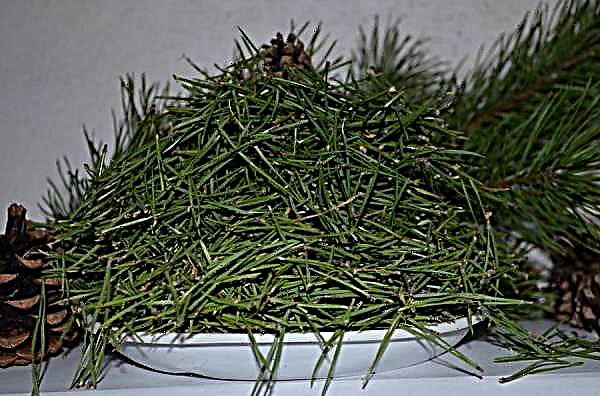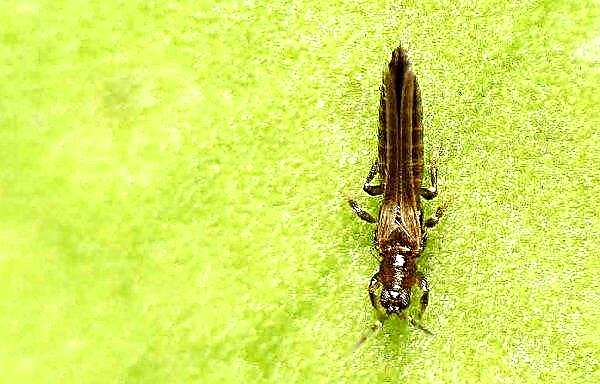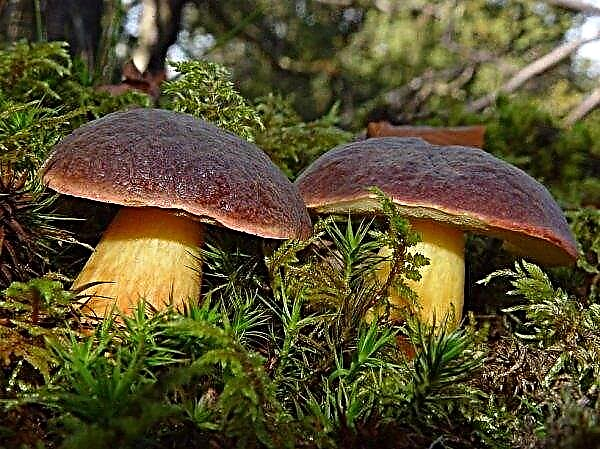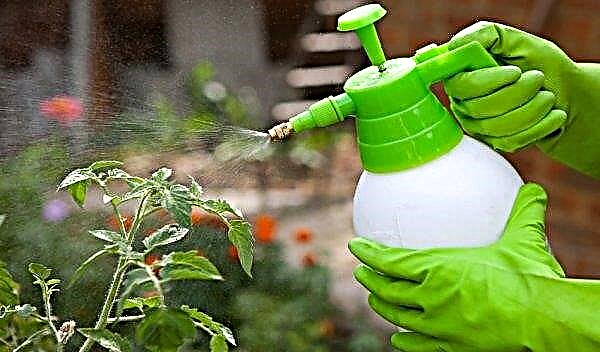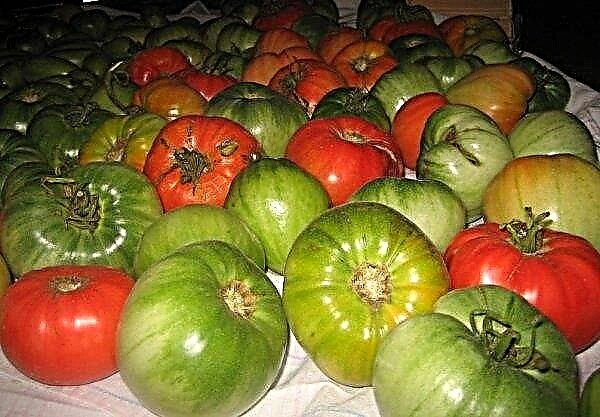A beautiful shrub called spirea has long been known to mankind. Its decorativeness has become especially appreciated with the advent of landscape design. The maintenance of splendor and flowering of the shrub is taken care of both in spring and autumn. But not every amateur gardener knows how different pruning techniques differ. About how to cut off the spirea, and how to take care of it in the future, will be described later.
Why cut spirea
Spirea (Latin name - spirea) has up to 100 species, each of which has a separate name. This is a shrub that easily tolerates pruning and is beautiful in the form of a hedge or ball. The main color of the flowers is white. Flowering can occur either in spring or in summer, depending on the variety.
Those who grow this ornamental shrub for the first time on their site are wondering if it can be cut, can it harm the plant and spoil the appearance of the bush.
Did you know? The popular name of spirea is the meadowsweet. The more famous name given to the bush for appearance is “bride”.
Experts say that pruning is an important event for several reasons:
- Breathability improves. Thanks to this, the bush becomes more resistant to fungal diseases, less exposed to the invasion of insect pests.
- Trimming dry, irregular, or overly protruding branches makes the bush more decorative.
- Pruning allows you to stimulate spirea to the formation of new shoots.
- Mowing the bush allows it to bloom more abundantly. Lateral shoots begin to grow more actively and the bush becomes lush.

Therefore, pruning is an indispensable measure for the normal growth of ornamental shrubs. If it is done correctly, then you should not worry about the meadowsweet, as the bush is able to recover quickly.
When to cut
Knowing the timing of the formation of the crown, on your site you can get harmonious shrubs that will delight with their flowering until the colds.
Did you know? Spirea is directly related to aspirin. It was the presence of salicin glycoside in its shoots that became the reason for the discovery of acetylsalicylic acid in the 19th century.
Blooming in spring
Inflorescences of such species of spirea are formed on branches that appeared in the previous season, and have a white or cream color. The exception is only some varieties, for example, Nippon, which blooms crimson, and Wangutta, painted in orange. The flowering spirea is beautifully covered with flowers for 2-3 weeks.
The following varieties are especially popular:
- Sharp-serrated;
- Gray;
- Nippon;
- Argut
- Wangutta
- Medium
- Oak leaf;
- Small town;
- Thunberg.

Flowering of these varieties occurs in May-June. In secluded landings at such bushes, weakened, intertwined branches are cut. You can also form a skeleton of a bush from healthy, powerful stems. In the first season after planting, cutting the shrub strongly is not recommended. You can only slightly prune the branches and remove the weak and growing inward crowns. Such a haircut will help to bloom the bush well in the new season.
Did you know? Spirea in Russia was used not only to decorate gardens - it was of practical importance. From graceful and strong rods made whips and ramrod.
In the second year, you will have to carry out a deeper pruning. Each faded branch is cut to the strongest young shoot. They also get rid of weak branches in such a way that the desired shape is preserved.
Spirea is characterized by rapid growth and can be very overgrown. So that the bush does not lose its decorativeness, every autumn, starting from the third year, all processes are cut into 1 / 4–1 / 5 parts, cutting them at the level of the soil. A similar method allows new branches to form normally in the new season.
Summer blooming
When the varieties blooming in spring have faded, a summer-flowering variety begins to please the eye. Any such variety differs from spring in a variety of colors: from pink and soft coral to purple and lilac. They bloom all summer.
The most popular varieties are:
- Japanese
- Felt;
- Birch-leaved;
- Dwarf
- Billard;
- Densely flowered;
- Loosestrife;
- Bumalda;
- Douglas.

Summer-flowering shrub must be cut in early spring. Work can begin immediately after the snow has melted. Care for summer varieties begins from the first year after planting - if the work is not started on time, the bush begins to dry out and the garden looks like untidy. In the first spring, the branches are shortened by ½, to a healthy, strong bud, directed outward. Beginner to wither and weak shoot completely removed.
After that, the bush begins to grow. In summer, immediately after flowering, all departed inflorescences should be removed. For the next season, in March-April, the bush again needs to be prepared for flowering, so all branches are cut by 1/2, and those that managed to freeze are completely removed. In summer, only faded peduncles are cut.
In the spring
First, remove old, severely frozen, damaged branches. Then you can trim the protruding shoots and strongly thickening thin branches.The rest of the healthy, strong branches should be updated by cutting them at a height of 20–25 cm.

In the first growing season, this shrub species is not pruned at all. A year later, they begin to care for the crown, cutting off only painful shoots in the fall. They give shape to the bush, removing faded branches.
Important! A thin shoot can form small, ugly inflorescences, for the development of which the plant will spend its energy.
Fall
In order for the saw cuts to drag out before the cold, in the autumn they cut the bushes no later than 14–20 days before the frosts are established. Depending on the climatic conditions, this should be done until mid-October. Immediately after the meadowsweet has begun to fade, it is necessary to cut and remove the faded shoots.
Every 2–3 seasons, the shrub must be thinned out, removing the deformed processes and weak shoots inside the crown.Every 7-10 years, the bush is cut almost completely, leaving a young, healthy branch (5-7 pieces).
How to crop
Based on the intended goals, the pruning procedure is sanitizing, rejuvenating, shaping.
Important! The terms of the general healing pruning of early flowering and summer flowering spires are carried out in different periods.
Pruning rules
Before you cut the shrub, you need to remember important rules:
- The first cardinal haircut and decoration of the bush is carried out 2 years after planting.
- Each branch can grow and develop 4 years. After this, the process of aging and dying off occurs. If you do not conduct a correct and timely cut, the shoot dries out soon.
- Seven-year-old stems are necessarily cut.
- Radical pruning involves cutting all processes to strong kidneys. Weak and dead branches are removed entirely.
- Each stalk has a biological age, so it is not recommended to leave stems of the same age on the meadowsweet. It is more correct to leave a few old and more young shoots. It is such a preparation that is correct; dying off will occur gradually and will not affect the state of the bush.
- Systematically performing rejuvenation of the meadowsweet, it must be borne in mind that pruning to hemp does not always give a positive effect.
- It is necessary to carry out a haircut carefully, being careful not to damage healthy kidneys. Sections and hemp cannot be left chopped.
- Shortening the branch, the cut must be performed at an angle above the kidney. It is better to remove the stump too.
- In order for the shoots to remain healthy and to please every flower, you need to use a quality tool. It must be sharpened and clean.
- When conducting autumn and spring cuts of shoots, you need to try to injure the bush as little as possible. Branches thinner than 2 cm can be cut with pruning shears, and more dense cuts are desirable. At the same time, they make sure that the tool does not touch the remaining shoots, which can inhibit their growth.
- When cutting thick shoots, the first cut is made from below with a depth of about ¼ of the diameter of the branch. 1-2 cm recede from the main shoot. The second saw is made higher, towards the first. A branch is cut off until it separates along the fiber. Only then the sawn off shoot will not take away part of the stem. At the end, the stump is carefully cut away.
- A good saw should have a smooth surface and edges, there should not be scraps of bark. It is advisable that moisture does not linger on the saw. Irregularities are recommended to clean.
- After trimming the place, the saw cut is covered with garden var.
Video: Trimming Spirea
For rejuvenation
According to statistics, spirea bushes can live 20-25 years. Each stem is viable for 6–7 years. An old plant cannot be beautiful, therefore a pruning method such as rejuvenation is used.
They begin to rejuvenate from the age of fifteen with a complete crop of plants to the ground. The optimal time for carrying out such a procedure is autumn (September or October).Important! A similar method can be used for plants that are severely affected by pests.

When the winter is over, sleeping young buds will begin to poke next to the root neck. This means that the bush turned out to completely rejuvenate.
To create a form
A shaping haircut can be planned for spring or summer. You can cut the bushes in the form of balls or a hedge planted along the fence. If spirea is grown to form a hedge, combining low and high varieties at the same time is not recommended for this - a beautiful picture will not work.
For a live fence, the following varieties are used:
- Grefshame;
- Wangutta

When shaping, parts of the shoots are cut off so that new branches grow, the lines must be left at the same level, even and symmetrical. Summer flowering bushes form when they have already blossomed. And in the spring they just trim the line and cut off the twisted and heavily thickened shoots.
Important! To avoid tillering, long branches are shortened by 20–25 cm.
How to cut in the shape of a ball
To have a white fluffy ball of spirea on the site, you need to do a haircut from the first year after planting. In the spring, annual shrubs are strongly sheared, leaving only bases 4–5 cm long. At the same time, they try to make the outline resemble the chosen style.
After this, the bush is given the opportunity to form new processes. In the next 3-4 season, the bushes are sheared along the contour twice: every spring, before the buds are biting, and after flowering. When the branches reach a length of 8-10 cm, they are cut in half.
Care after trimming
After pruning, the bush is abundantly watered and fertilized. Then the soil is covered with peat or compost. In summer, the meadowsweet can be supported by an organic mixture with minerals. To do this, the mullein is diluted with water in a ratio of 1: 5. Add there 10 g of superphosphate diluted with 1 liter of boiling water and left for one day.
Such top dressing is made at the rate of 10 liters under one bush. To fertilize well, the perennial is watered the day before. Some time after feeding, the bush is again watered and mulched. As mulch, you can use sawdust, foliage and compost.
Pruning spirea generates active growth of new shoots. This little care will allow to refine any site, even with minimal care.Did you know? Human life depends on 1,500 varieties of cultivated plants. Moreover, about 90% of plant food is obtained from plants.



